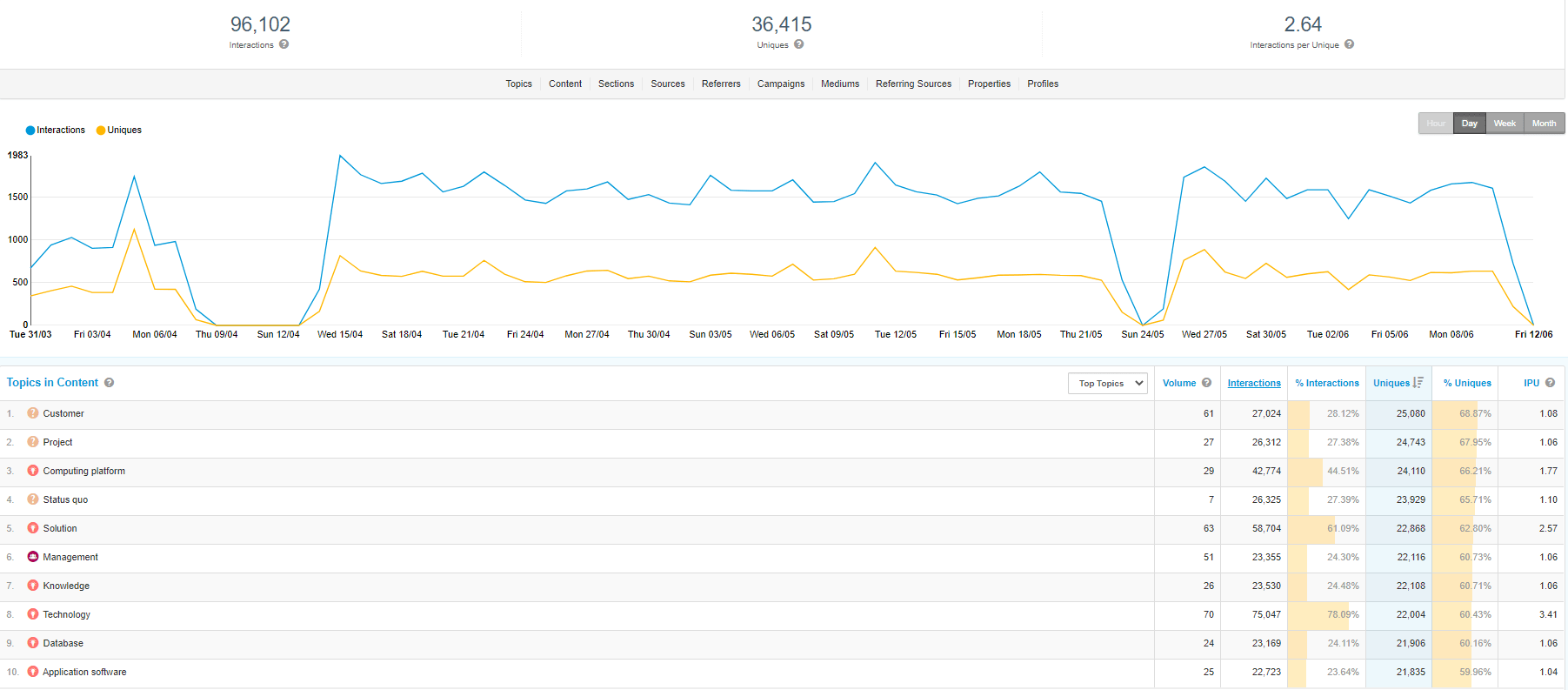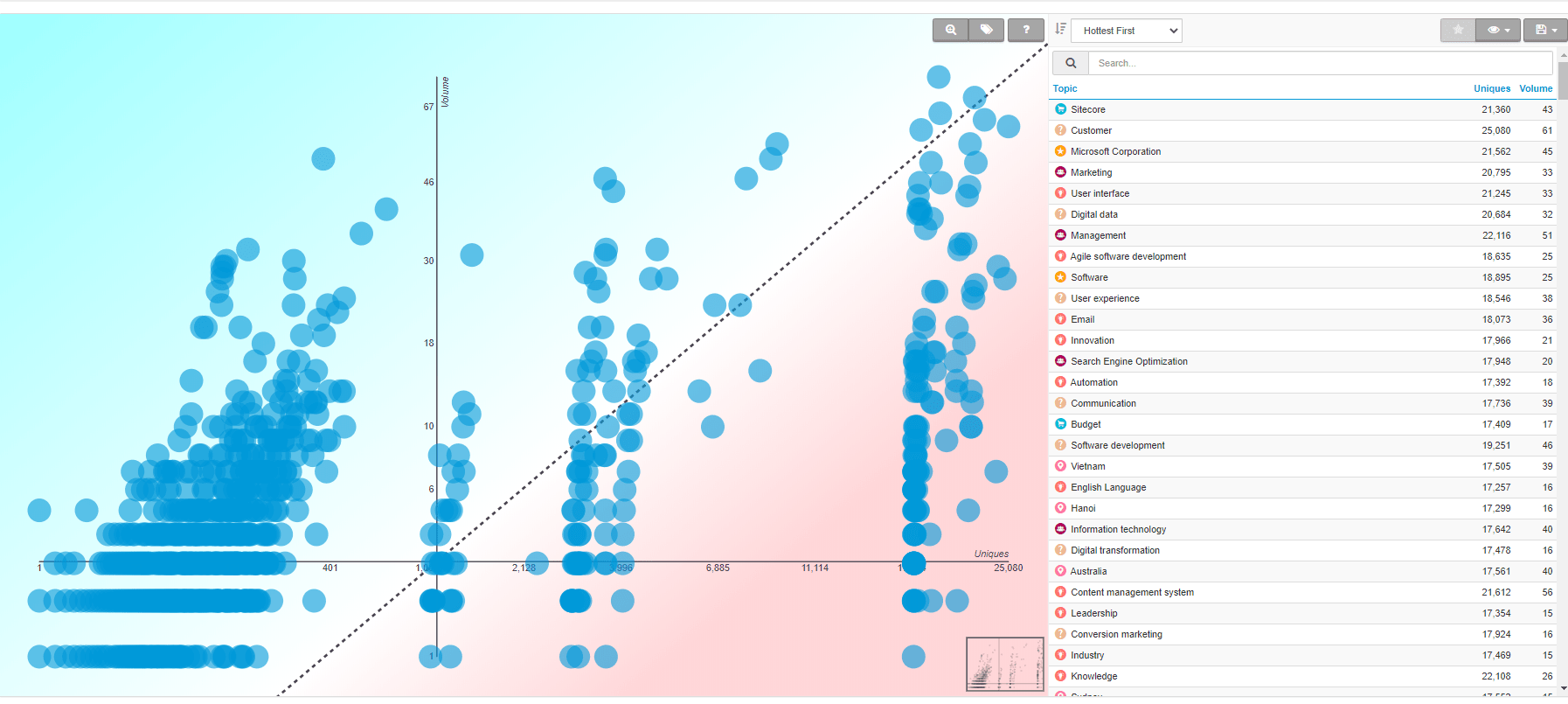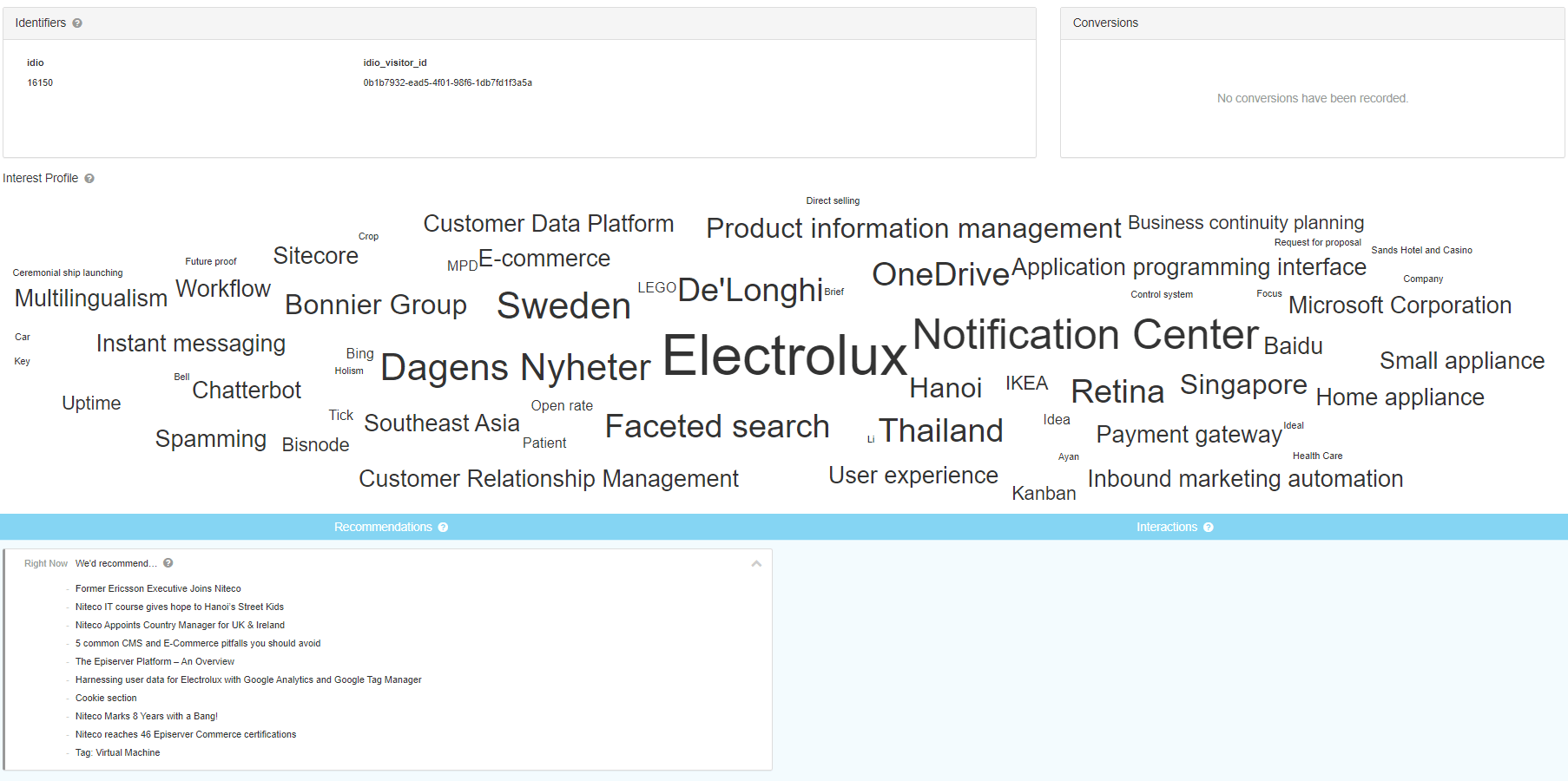Manually tagging all the content on your site can be a daunting task. Optimizely Content Recommendations, formerly known as Idio, provides you with easy to understand content intelligence that helps automate your personalization efforts.
Do you look after a website that has grown over the years and you feel like it’s become just a bunch of unstructured content? Do you find your end users leaving the website after viewing just one page? Do you want to provide a personalized experience, but you don’t have the resources to tag all your content manually?
You are not alone.
Recently, a client approached us for advice on how to best present and deliver content recommendations for users of their website. Basically, the question was, “How do we tell people what content they can explore next after they just finished a piece of content?” The idea was to present a list of related content on every page in order to encourage users to stay on the site. Until very recently, the only answer would have been manual tagging of any and all pieces of content. The problem was that the client’s website already counted more than 15,000 pages. So manual tagging couldn’t even be considered due to the effort involved. Countless businesses share this same problem.
The user sets the personalization standard
There has been a trend of pain points over the last number of years where marketing teams can’t keep up with the expectations of end users. Instead of you, as a marketer, being in the driver’s seat, it’s now the customers that are far ahead. Meanwhile, you are still trying to achieve yesterday’s user needs and wants.
Users expect experiences that are personalized, ones that they can relate to. They want experiences that are unified regardless of the device and touchpoint, and seamless, providing them the shortest way to achieve their goal. However, your website is lagging behind in personalization, you don’t have the team resources (or even the platform) to achieve it, and your customers are slowly moving to your competitors.
Welcome to the age of relevance.
A brief history of online experiences
When it comes to online experiences, the 2000’s were the age of “one size fits all”. You were doing well if you had a website and an online presence. It was enough to have a mailing list that you would use to blast the exact same emails to week after week. It didn’t matter so much what experience was being provided.
In the 2010’s, many things were different. The tech giants were already born. Apple, Google, Amazon and Facebook realized the importance of understanding their customers by collecting data. And marketing teams started using this new-found data to identify and create user segments in order to provide a more personal experience. This was the decade of “manual segmentation”, when marketing teams started tagging content based on business rules. This allowed businesses to offer some sort of personalization on their websites. However, without the marketing teams and the right platforms, there would be no personalization.
We are in 2020, however, and technology has moved fast. It now offers a number of tools that can automate this process, giving you the ability to provide a personalized experience (1:1) on the fly. Marketers are no longer bogged down with a lot of manual work such as tagging content and setting up personalization rules only to get lost in the process. They can now focus on their customers and help optimize the experience for them.
Content Intelligence with Optimizely Content Recommendations
One of the tools we use is called Optimizely Content Recommendations. In late 2019, industry-leading CMS and E-Commerce platform provider Optimizely acquired Idio, already a promising tool for content intelligence. Now named Optimizely Content Recommendations, the function has replaced Epi’s previous offering in this area (Optimizely Advance) and has been integrated into the Optimizely platform. Most recently, it was named a prominent part of Optimizely’s Intelligence Cloud.
The basic mission statement of Optimizely Content Recommendations is understanding content and its effect using AI. That means it helps you to understand a visitor’s intent and recommends the best content based on its relevance for this visitor.
NLP, AI and user data create content intelligence
As the first step, Optimizely Content Recommendations uses Natural Language Processing (NLP) to understand what, exactly, a given piece of content is about. Using content scraping and analytics, it extracts the piece’s main topics.
Then, when a user navigates to the site, it tries to understand what the visitor’s interests are from a profile based on the pages that this visitor clicks/views. Unique users are identified via cookies and their information can be stored in Optimizely’s Customer Data Platform.
Lastly, Optimizely Content Recommendations uses this data to recommend the most fitting content for this user. That means that if a user navigates to a lot of pages with content about website personalization, the tool will recommend more pieces of content for which it has determined the content to be about personalization to said user.
The benefits of Optimizely Content Recommendations
Now, this sounds very neat, but what exactly is the benefit of using Optimizely Content Recommendations? Well, as we see it, there are three:
1. The tool helps you to establish the feel of a 1:1 interaction with users, which helps to keep users engaged
2. Your content is no longer static – it’s dynamic, based on users’ interests and engagement. That means you don’t have to create manual rules or tag content manually, which saves time
3. This personalization of the user experience helps to drive conversions
How Optimizely Content Recommendations presents information
Optimizely Content Recommendations offers a simple to use dashboard to get a quick overview over all data analytics and the scraped content topics. The content recommendations themselves can be managed with a single dashboard as well. Everything happens automatically and the recommendation dashboard shows content that could potentially be recommended for a specific user profile. No setup or configuration is needed.
Some key example dashboards:
- General Dashboard: This dashboard shows all topics by volume/interactions as well as all content pieces available on the site that are being tracked. It also shows the traffic sources (mediums, referrer URLs, channels etc.) as well as all the profiles the tool is tracking.

- Topic Performance: Topics are shown by the number of interactions and volume. This lets you easily identify high-potential topics that a lot of users care about, supporting your search for content opportunities. The “Volume” column shows the number of content pieces while “Uniques” shows the number of visitors interested in that topic. These stats are extremely helpful to content editors trying to build a successful content strategy.

- User Profile: Each visitor is assigned a unique visitor ID by Optimizely Content Recommendations. Their user profile shows a word cloud of all the topics that this profile is interested in. It also informs you of all actions this user has taken (e.g., what pages this user has visited). Finally, it shows a few recommendations of content pieces that will be shown to this specific user:

If you want to give Optimizely Content Recommendations a try, you’re in luck. The free trial offer Optimizely had made for Content Diagnostics, a basic version of the tool, has been extended until September 30th.
If you want to know more about how Optimizely Content Recommendations can help you with your own content strategy, contact Niteco today!
